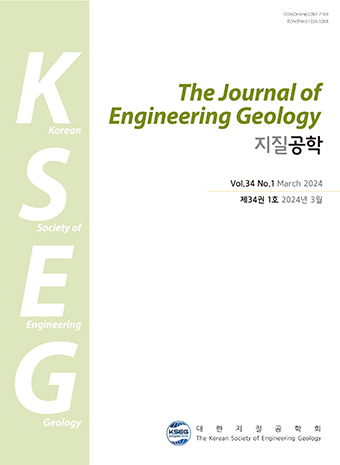Research Article
Abstract
References
Information
- Publisher :Korean Society of Engineering Geology
- Publisher(Ko) :대한지질공학회
- Journal Title :The Journal of Engineering Geology
- Journal Title(Ko) :지질공학
- Volume : 30
- No :3
- Pages :315-325
- Received Date : 2020-08-26
- Revised Date : 2020-09-17
- Accepted Date : 2020-09-21
- DOI :https://doi.org/10.9720/kseg.2020.3.315




 The Journal of Engineering Geology
The Journal of Engineering Geology








